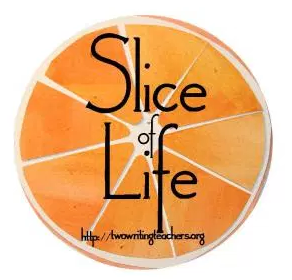Slice of Life: What Would Be in Your Playlist? #SOL21
Music was the one thing my mom continued to connect to, respond to and remember as her dementia progressed. Her dementia impacted her eyesight – her brain did not relay what she was seeing so she could not respond to any visual stimulation. We relied heavily on auditory stimulation to connect with her. She always perked up and tuned in when she heard a song.
We made her a playlist on an iPod. Over the years, family members continually added songs to her playlist. We would remember a song she loved and add it. It became known as “Grandma Peg’s Playlist.” Whenever you went to visit it was playing. The caregivers had their favorites and so did each of us. It became a ritual to choose songs and sing along with mom.
The iPod now lives in my kitchen. Most days when I start dinner, I find myself listening to her playlist. Each song brings back vivid memories. The images created are powerful. It amazes me how connected we are to music – the words, the rhythm, the pace, and the mood. They each work together to create an experience for the listener.
I have been thinking a lot about the power of music and how I used it this year in playful and purposeful ways with students – as soft starts, dance parties, DJ of the day, self-portrait playlists, and song spine poetry. It is a great link to poetry and a great way to explore an idea across multiple texts. In grades 3-5, I have been using songs to engage students in conversations about themes, symbols, metaphors, mood, and layers of meaning. It seems to come naturally to them with music – a form of poetry. We can then connect the conversations we are having and the crafts they are noticing to other texts – both short and long. Students are creating class playlists, playlists of their lives, or playlists of their year. I recently shared this playlist of my life with students and educators. I love to see their playlists and hear why they chose each song. I learn so much about them and they love it!
In grades K-2, students notice how the music and the words work together to create a strong feeling. Music invites readers to notice word choice, repetition, and mood. It is short so it is easy for them to reread and reference lines or words in the text. The accessibility allows them to notice, name, discuss, and yes … MOVE! The rhythm does truly get them and they cannot contain themselves which is just perfect. They can then transfer this understanding to the texts they are reading independently.
Here are some great poetry books that will get you moving and grooving in K-2:
Science tells us that the auditory sense is strongly linked to our memory. Music is everywhere. It is a part of our daily lives. It is in all of our memories. In addition, kids want to listen to music – they love it. If they are doing the kind of thinking we want them to do with a text they want to listen to and discuss – it seems like a win-win to me. I know I can’t help but think about the messages in the songs I am listening to and I want young readers to know that this what readers do – in the car, in the shower, while they exercise, in the kitchen, and hopefully… in school. Many teachers are focusing on poetry this month – don’t forget to add some music to your text set.






